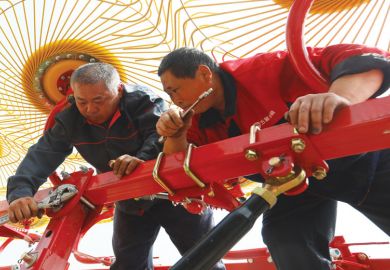The fundamentals of the description of the mechanics of continuous media we owe to the great 19th-century natural philosophers. They pointed us toward the basic tools such as stress, strain and elasticity. Real materials, especially artificial materials, present a harder problem to the contemporary engineer. The requirement of optimal performance in different environments demands that elements of the most desirable properties of several substances must be combined in one material. Thus were born composite materials - though of course nature, in both inorganic and organic guises, has long made use of composites. The continuum mechanics of a composite material, however, presents new difficulties.
For now, not only do we have the problem of inherent inhomogeneity, but material strength depends on crack behaviour and propagation; internal surfaces may slide against each other; and a myriad of other complications set in. The well-posed problem - albeit difficult - of the applied mathematician is transformed into the rather messier mishmash of semi-empirical method which is primarily the domain of the mechanical engineer. The task is made easier by high-powered computers which make tractable the sometimes impossibly entangled sets of equations required to describe tensor interactions between a large number of domains within a single composite slab. This is the subject area of the new journal Mechanics of Composite Materials and Structures. It is soundly produced, with excellent print quality and photographic reproduction. In the first six issues, there are interesting articles on subjects such as cracking in brittle matrix composites, design of composite laminates, finite element analysis of viscoplastic structures, and torsional stress analysis of cord-rubber composite laminates. The journal includes a regular conference diary and book reviews.
Twenty or 40 years ago, all this would have guaranteed success, but now we live in different times. The editor seems aware of this. So what is so special about this journal? He states: "Many of the existing journals publish almost anything.'' I understand; academic standards are not what they used to be. The editor has been approached to launch a "more focused" journal. What is going on here? For too long, publishers catered for a captive market. No longer. A new journal? My library poses but one question - which one do we exchange it for? To that there is unfortunately no answer. The nearest competitor - The Journal of Composite Materials - has already filled the niche. It is widely cited in this journal and shares three editorial board members. It published 7,200 pages in 1995, as opposed to the 344 of its younger sister. Wiley needs to think again. I do not see this journal surviving.
Tim Sluckin is professor of applied mathematical physics, University of Southampton.
Mechanics of Composite Materials and Structures
Editor - J. N. Reddy
ISBN - ISSN 1077 2642
Publisher - Taylor and Francis
Price - £156.00 (institutions) £78.00 (individuals)
Pages - Four a year



